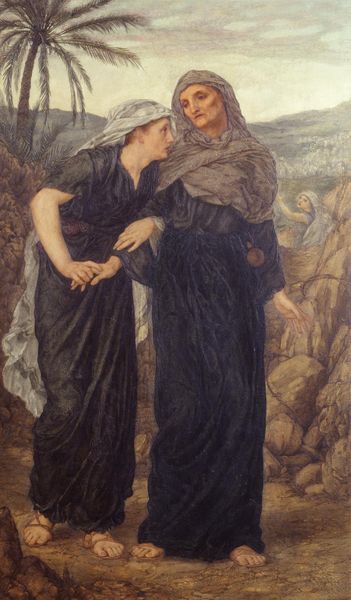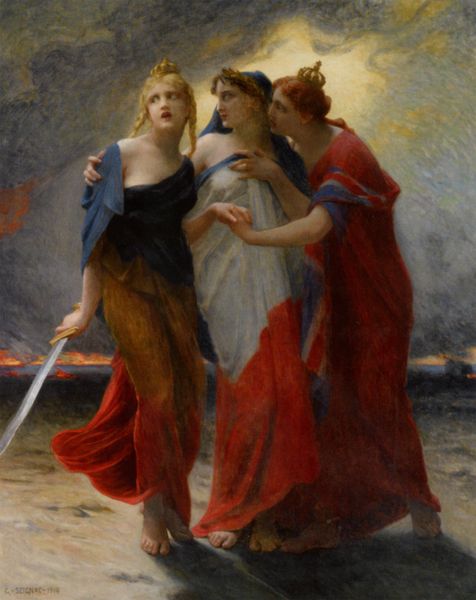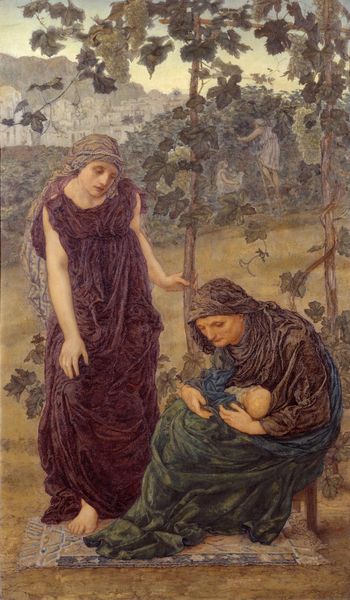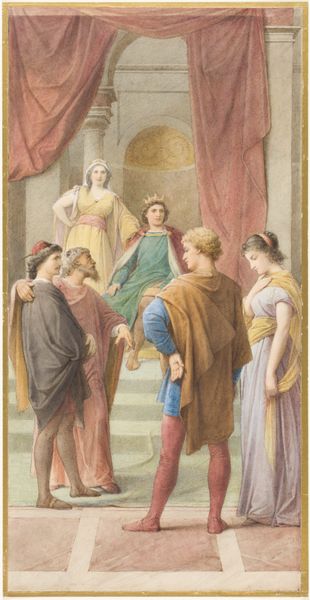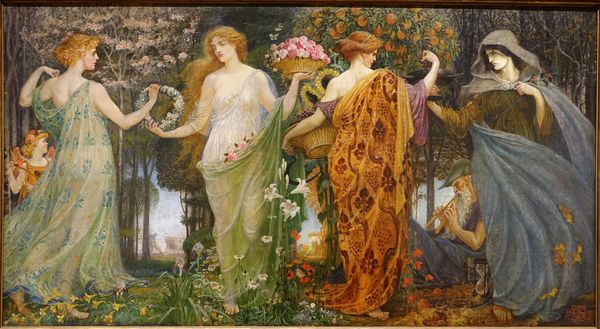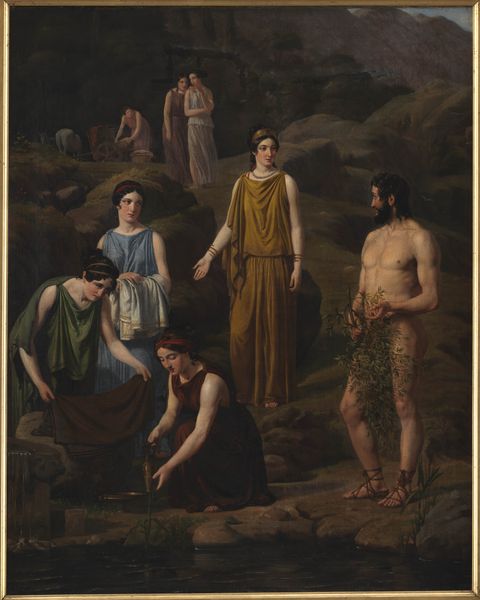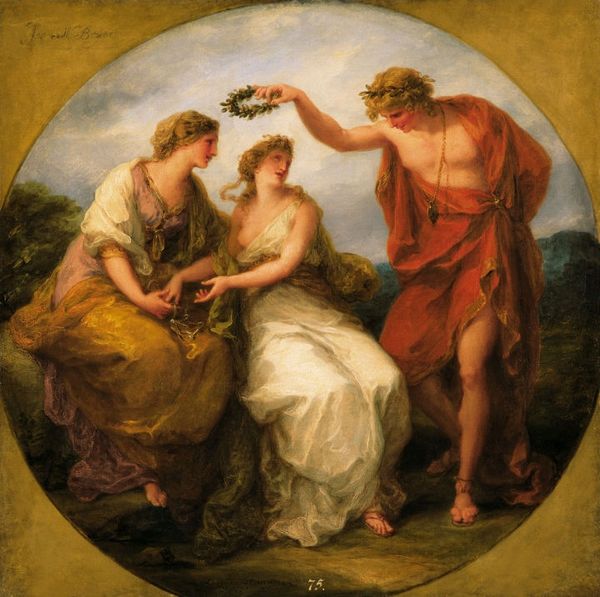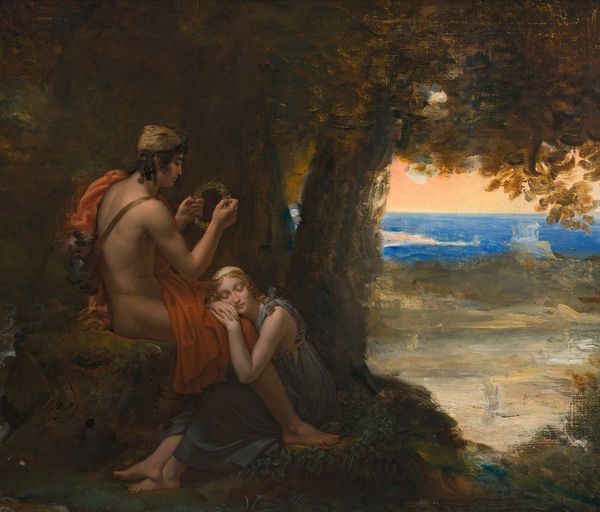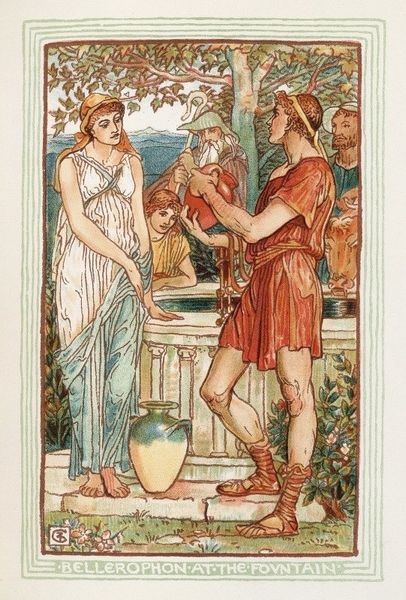
Die wieder vereinten Brautpaare auf dem Weg aus dem Wald, vorn Helena und Demetrius, dahinter Hermia und Lysander 1883
0:00
0:00
Copyright: Public Domain
Leopold von Bode made this watercolor on paper, "Die wieder vereinten Brautpaare auf dem Weg aus dem Wald, vorn Helena und Demetrius, dahinter Hermia und Lysander," which translates to "The reunited bridal couples on their way out of the forest, Helena and Demetrius in front, Hermia and Lysander behind," in 1883. Painted in Germany during a period of burgeoning nationalism, Bode’s artwork draws on Shakespeare’s "A Midsummer Night’s Dream" to explore themes of love, order, and social harmony. The narrative centers on two pairs of lovers, whose relationships are complicated by love potions and feuding fairy royalty. The forest setting becomes a space where social norms are upended and individual desires clash. Here, Bode presents a vision of resolved romantic entanglements. This idyllic image perpetuates the idea of marriage as the ultimate goal for women, reinforcing traditional gender roles. Bode seems to suggest that the pathway to societal harmony lies in the successful pairing-off of men and women. In looking at this image, it is poignant to consider the way that love, and who gets to experience it, remains a deeply political issue.
Comments
No comments
Be the first to comment and join the conversation on the ultimate creative platform.
